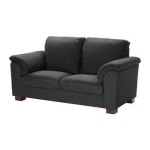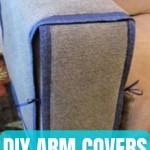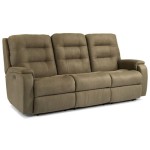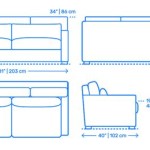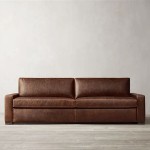How Much Fabric Do I Need To Reupholster a Duncan Phyfe Sofa?
Reupholstering a Duncan Phyfe sofa can breathe new life into this classic piece of furniture. However, one of the first and most crucial steps involves accurately estimating the required fabric. This process requires careful measurement and consideration of several factors, impacting both the project's cost and final aesthetic.
Duncan Phyfe sofas, known for their graceful lines, typically feature exposed wood frames, rolled arms, and often, intricate detailing. These design elements influence the fabric calculation. While a simple, boxy sofa might require a straightforward measurement approach, the curves and details of a Duncan Phyfe sofa demand a more nuanced strategy.
Before beginning measurements, gather the necessary tools: a flexible measuring tape, a notebook, and a pen or pencil. Precise measurements are paramount, so double-checking each measurement is recommended to avoid costly mistakes. Clear labeling of each piece's measurements also helps maintain organization during the calculation process.
Begin by measuring the sofa's outside back. Measure from the top edge, down the curve, and to the bottom edge. Include extra fabric for tucking and stapling, adding several inches to this measurement. Next, measure the inside back, following the same curved path. Record these measurements separately.
The arms present the next measurement challenge. Start at the top outside edge of one arm, following the curve down to where it meets the seat. Repeat this process for the inside of the arm. Due to the curved nature of Duncan Phyfe arms, taking multiple measurements along the curve is essential to ensure accuracy. Sum these smaller measurements for a comprehensive arm length.
The seat requires measurement from front to back and side to side. Add extra inches to these dimensions to account for the depth of the seat cushions and for wrapping the fabric around the frame. Consider also the seat's construction. If it’s a T-cushion, for instance, additional fabric may be needed for the welting and seams.
If the sofa includes a skirt, measure the drop from the frame to the desired hemline. Then, measure the perimeter of the sofa base. Multiply the drop by the perimeter and add extra inches for hemming and seams. If the skirt has pleats or gathers, additional fullness will be required, often calculated as 1.5 to 2 times the flat perimeter measurement.
Once all measurements are taken and recorded, it's time to calculate the total fabric required. Since fabric is typically sold by the yard (36 inches), converting measurements from inches to yards simplifies the process. Dividing the total inches by 36 yields the yardage.
The fabric's pattern repeat significantly influences the total yardage. A large-scale pattern requires careful planning to ensure the design aligns correctly across the sofa's different sections, especially the arms and back. Extra fabric may be necessary to match the pattern seamlessly. Consult the fabric's specifications for the pattern repeat size and factor this into the calculations. A larger pattern repeat generally requires more fabric.
The fabric width also plays a crucial role in determining the required yardage. Standard fabric widths vary, and a narrower width might necessitate purchasing extra length to accommodate the sofa's dimensions. Carefully compare the fabric width to the sofa's largest measurements, such as the outside back or the seat width, to ensure enough fabric is available for each section.
Beyond pattern repeat and fabric width, factors like fabric directionality and nap influence yardage requirements. Directional fabrics have a distinct top and bottom, affecting how the fabric is cut and laid out. Napped fabrics, like velvet or corduroy, have a raised surface that appears different depending on the light direction. For both these fabric types, extra yardage is often needed to ensure consistent appearance across the entire sofa.
While careful measurements and calculations provide a good estimate, adding 10-20% extra fabric is a prudent practice. This extra fabric accounts for potential miscalculations, pattern matching, and unforeseen issues during the reupholstery process. Having a buffer of extra fabric can prevent delays and ensure a smooth completion of the project.
Consulting with a professional upholsterer is highly recommended, particularly for complex projects like reupholstering a Duncan Phyfe sofa. An experienced upholsterer can provide expert advice on fabric selection, accurately assess the required yardage, and address any unique challenges posed by the sofa's design. Their expertise can be invaluable in achieving a professional, high-quality result.
Ultimately, the amount of fabric needed to reupholster a Duncan Phyfe sofa depends on several factors, including the sofa's specific dimensions, the fabric's pattern repeat and width, and any special considerations like directional prints or nap. Meticulous measurement, careful calculation, and consultation with a professional can ensure an accurate estimate and a successfully completed reupholstery project.

Vintage Sofa Makover Delaware

Duncan Before And After

Vintage Sofa Makover Delaware

Duncan Before And After

Vintage Sofa Makover Delaware

Spruce Upholstery Spring Before And Afters At

Vintage 19th Century Duncan Phyfe Sofa In Barrow Fabric For At 1stdibs

How To Identify A Duncan Phyfe Sofa Comprehensive Guide

Antique Duncan Phyfe Sofa

Duncan Phyfe Sofa


